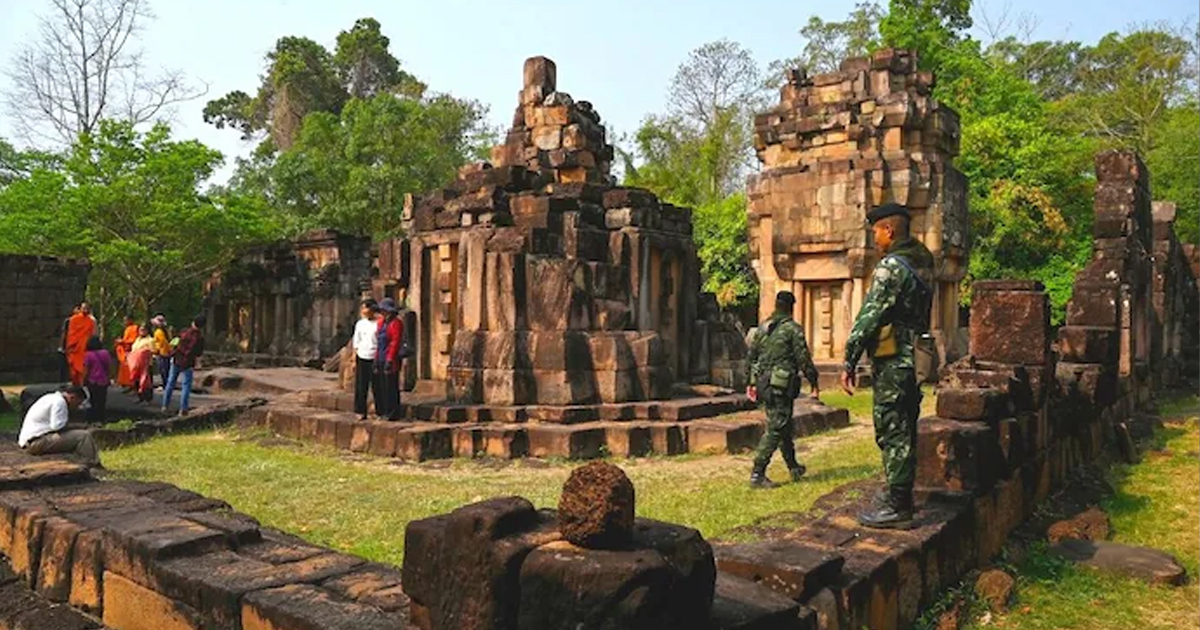On Thursday, July 24, rising tensions between Thailand and Cambodia escalated into a deadly border clash. According to Thai authorities, at least 12 Thai nationals, most of them civilians, were killed in the violence. The number of casualties on the Cambodian side remains unknown as of now.
Both nations have accused each other of triggering the conflict, which allegedly began with cross-border gunfire. Thailand claims Cambodia launched rocket attacks shortly after, prompting Bangkok to respond with targeted airstrikes on Cambodian military positions.
Roots of the Conflict
At the heart of the Thailand-Cambodia conflict lies a deep-rooted territorial dispute over the area surrounding the Preah Vihear Temple, a centuries-old Hindu shrine perched on a cliff along the border. Although the International Court of Justice ruled in 1962 that the temple belongs to Cambodia, Thailand has disputed the surrounding land for decades.

In addition to historical claims, several other factors contributed to the escalation in 2025:
- Cambodia’s political unrest following contested elections in 2024.
- Military buildup by both countries along the Dangrek Mountains.
- Competition over oil and gas resources in the Gulf of Thailand.
- Rise in nationalist sentiments fueled by misinformation and aggressive rhetoric.
Timeline of Key Events in 2025
May 8, 2025 – A Cambodian soldier is killed in a brief clash near the disputed border.
June 2025 – Both sides deploy additional troops and artillery to strategic positions.
July 10–15, 2025 – Full-blown combat breaks out. Heavy shelling and airstrikes are reported in the border provinces of Sisaket (Thailand) and Preah Vihear (Cambodia).
July 17, 2025 – Civilian casualties rise, and nearly 80,000 people are displaced as towns near the frontlines are evacuated.
July 20, 2025 – ASEAN calls for an emergency meeting, urging an immediate ceasefire.
July 22, 2025 – Sporadic fighting continues despite international pressure. UN observers are denied entry to active conflict zones.
Humanitarian Crisis
The war has created a fast-growing humanitarian emergency:
- Casualties: 16 confirmed dead, hundreds injured.
- Displacement: Over 80,000 civilians evacuated.
- Infrastructure damage: Border villages, schools, and temples have been severely damaged.
- Healthcare crisis: Medical teams are overwhelmed, and many injured civilians cannot access timely treatment.
International organizations like the Red Cross and Médecins Sans Frontières (MSF) have called for open humanitarian corridors.
Global and Regional Reactions
The international community has expressed serious concern over the conflict:
- ASEAN: Issued a unified statement urging restraint and offering mediation.
- United Nations: Called for a ceasefire and deployment of peacekeeping observers.
- China: Urged peaceful resolution but maintained a neutral stance publicly.
- United States and India: Offered humanitarian aid and pushed for a diplomatic solution.
Despite calls for peace, mutual distrust remains high, and both governments have blamed each other for instigating violence.
